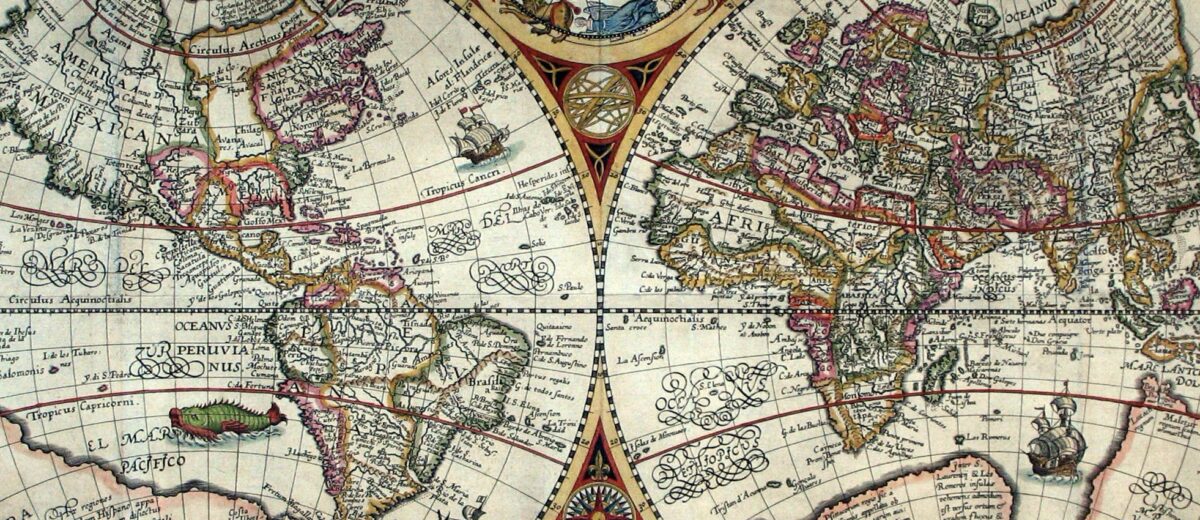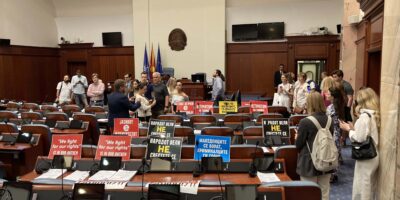Life in an ‘open-air museum’ like the city of Amsterdam is full of unexpected discoveries.
This week I learnt about a Dutch Reformed preacher and theologian who died exactly 400 years ago after facilitating the remarkable era of world exploration and trade which launched the fledgling Dutch Republic into its so-called ‘Golden Age’. He became a world leader in map-making and navigation, developing a new method for determining longitude.
Preaching and publishing in Amsterdam, he was a founder of the Dutch East India Company for which he drew more than a hundred maps. He instigated exploratory trips to the Arctic Sea and later the East Indies. He equipped Henry Hudson with maps for his search for a north-east passage to the east, but which ended up going westward, leading to the discovery of the Hudson River and Manhattan Island.
Although never crossing the equator himself, he pioneered the map of the southern hemisphere sky, designing a celestial globe depicting several newly-found constellations including the Southern Cross.
For Petrus Plancius (1552-1622), born Pieter Platevoet (flat-foot) in what is now Belgian West Flanders, navigation, cartography and astronomy were logical extensions of his Calvinist faith. He had studied theology in Germany and England before becoming a minister in Brussels, aged 24.
Two books
He was familiar with the 1561 Belgic Confession, drawn up by Guido de Brès fifteen years earlier, which spoke of two books revealing God:
First, ’the creation, preservation, and government of the universe, since that universe is before our eyes like a beautiful book in which all creatures, great and small, are as letters to make us ponder the invisible things of God: God’s eternal power and divinity, as the apostle Paul says in Romans 1:20 (All these things are enough to convict humans and to leave them without excuse.)
‘Second, God makes himself known to us more clearly by his holy and divine Word, as much as we need in this life, for God’s glory and for our salvation.
Other reformers talked of God’s two books, the Book of Words (the Bible) and the Book of Works (creation), both of which were to be explored to reveal more of God’s glory.
When Brussels, then part of the rebel Dutch Republic, fell to the Spanish in 1585, the threat of religious persecution forced the 33-year-old Plancius to flee north to the port of Amsterdam. There he found himself in a vortex of ship-building, cartography and exploration, where returning sailing vessels reported fresh findings about God’s creation. Somehow acquiring nautical charts smuggled from Portugal (where they were considered state secrets), he began his prodigious map-making using the newly-developed Mercator projection.
While continuing his work as preacher, he also began publishing journals and navigational guides. Soon he became recognized as an expert on safe maritime routes to India and the nearby ‘spice islands’, part of Indonesia today, and formerly the Dutch East Indies. He trained captains, navigators and sailors in the use of maps and navigation instruments, sending them off on journeys to gather information about the southern stars, oceans and coastlines to improve his maps.
Cosmic gospel
Abraham Kuyper, the Dutch theologian, politician, educationalist and journalist, father of Christian worldview thinking, referred specifically to Plancius in his 1898 Stone Lecture on Calvinism and Science delivered in Princeton. The Christian motivation for science, he expounded, was to study the handiwork of God and to learn more of his attributes. Scientific study was not something apart from Christ, but rather flowed from Christ. Kuyper’s was a wide and cosmic gospel, as Christ’s redemption was cosmic in breadth and not limited to the salvation of individuals. God’s goal was the reunion of all things in heaven and earth to Christ as their original head: ‘for from him, and to him and for him all things were created’.
Turning to Plancius, Kuyper continued: ‘The investigation of the lines of longitude and latitude of the terrestial globe formed in his estimation one whole with the investigation of the length and breadth of the love of Christ. He saw himself placed between two works of God, the one in creation, the other in Christ, and in both he adored that majesty of Almighty God, which transported his soul to ecstacy.’
‘Ecstacy’ was perhaps more Kuyper’s rhetoric than reality, yet Plancius was fanatical in debating predestination, opposing the free-will position of his ministerial colleague Jacob Arminius. One Arminian pamphlet of 1619 depicted Plancius preaching from a pulpit prompted by a devil standing behind him. He also engaged rigorously with less zealous Calvinists, as well as Lutherans, Catholics, Anabaptists and Jews.
Belgian researcher Antoine de Smet attributed to Plancius the dominance of ‘strict Dutch Calvinism’ in the Netherlands, and the rise of the United Provinces as a maritime and economic world power in the first half of the seventeenth century.
For Plancius, it was all about studying both books to discover more of God’s glory.
P.S. If you missed last week’s Schuman Talk with Ineta Lansdowne and Dr Mari Blaj, you can follow it here. Both Ineta and Mari grew up under communism and know first hand the tricks of language which are being recycled today to distort reality.

Till next week,



